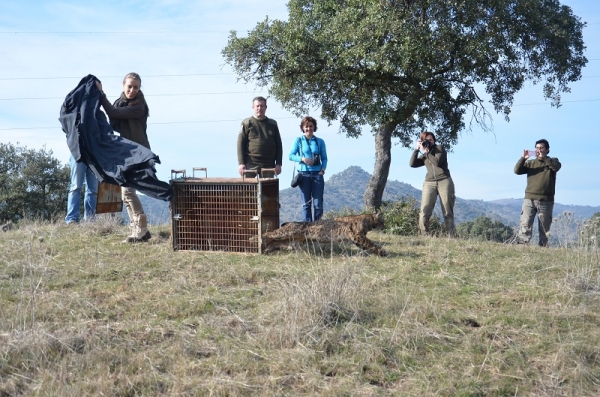The Hepatitis E Virus (HEV) is an emerging zoonotic pathogen in Europe that affects humans, doing damage to the liver and also to other organs, such as the kidney and the central nervous system. In Europe, animals are the main source of HEV infection for humans. A study by the Animal Health and Zoonosis Research Group (GISAZ) at the University of Cordoba, and the GC-26 Group at Cordoba's Maimonides Biomedical Research Institute, together with other national and international institutions, and published in the journal Transboundary and Emerging Diseases, analyzed the exposure to Hepatitis E Virus in the Iberian lynx, an animal on which no studies of this type had been carried out, despite the fact that the virus is present in other species, such as pigs, wild boar, deer and horses, with which the Iberian lynx shares habitats in Spanish Mediterranean ecosystems. The results of the study confirmed that captive lynxes have a higher risk of exposure to Hepatitis E Virus than animals in the wild.
Specifically, the study analyzed serum samples from 275 Iberian lynxes, and liver and feces samples from 176 others, to test the prevalence and seroprevalence of the Hepatitis E Virus, i.e. the presence of active virus and of antibodies once the infection has passed. Although active infection by the virus was only detected in one animal, the seroprevalence results were different depending on the habitat of the lynx: in the wild or in captivity. As Javier Caballero Gómez, a researcher at the University of Cordoba's Department of Animal Health and the Maimónides Biomedical Research Institute, explains, "in captive populations, seroprevalence reached 33% of the lynxes studied, while in free-ranging populations, exposure to the virus was much lower: 7%".
The consumption of products derived from infected animals is considered the main route for the transmission of Hepatitis E in humans, and has also been suggested for other animal species, including felines. In this regard, although more studies are still needed to confirm it, an initial hypothesis that the research team is considering about the difference in exposure between lynxes in the wild and in captivity, in addition to possible contact with other infected species, is the lynx's diet, which mainly consists of rabbits. While wild lynxes mainly consume wild rabbits, and previous studies carried out by this same group have shown that there is hardly any circulation of the Hepatitis E Virus in their populations, captive lynxes feed mainly on farm rabbits, and there are studies that have found virus circulation in these rabbits in Italy and France, although the presence of the virus in these animals in Spain has not yet been evaluated.
In relation to infection in other animals, this pathogen does not usually generate symptoms or severe lesions in animal populations, and its presence is quite fleeting. In pigs, for example, it usually remains in the blood for one to two weeks, and no more than eight weeks in feces. Even so, with the aim of limiting exposure to the virus in the Iberian lynx, it would be valuable to know how infection occurs, particularly in captive animals, where greater exposure has been observed. If the hypothesis that the main route of infection in this subpopulation is farm rabbit meat is confirmed, measures could be taken to prevent infection, such as feeding animals with rabbits from farms that do not have the virus.
Finally, the study has also discovered the presence of the genotype 3f of the hepatitis E virus in lynxes, which is the most frequent one in infected people in Spain. But, as the research team points out, the presence of this genotype should not generate a public health concern because the Iberian lynx is not a food source for humans, and contact with these species is infrequent. "It is true that in captivity centers there is some proximity with the animals, or contact with feces, which could be contaminated, but the risk is very low," says Caballero Gómez.
Reference:
Javier Caballero-Gómez, Antonio Rivero-Juarez, Irene Zorrilla, Guillermo López, Fernando Nájera, Rainer G. Ulrich, Carmen Ruiz-Rubio, Javier Salcedo, Antonio Rivero, Jorge Paniagua, Ignacio García-Bocanegra, "Hepatitis E virus in the endangered Iberian lynx(Lynx pardinus)," Transboundary and Emerging Diseases, June 2022, https://doi.org/10.1111/tbed.14624.


